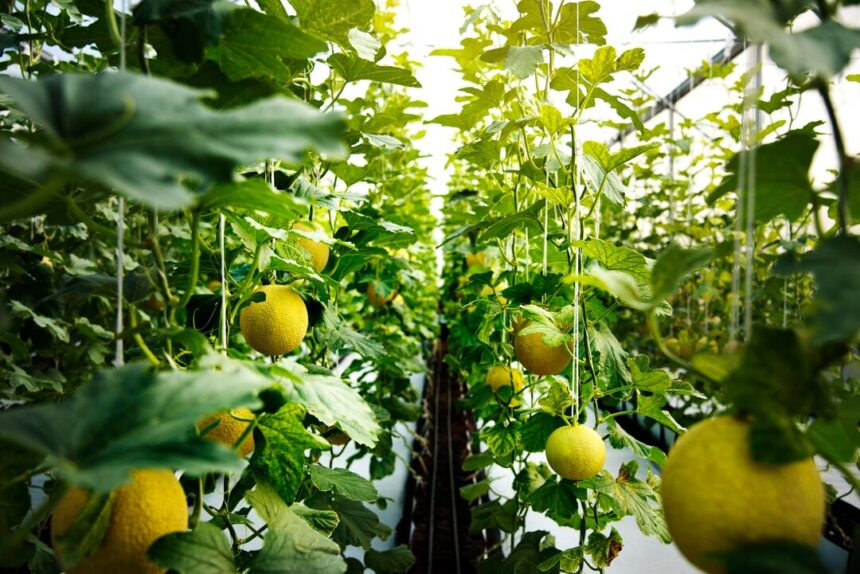In a world where sustainable farming practices are increasingly vital, food forests emerge as a beacon of hope. These innovative agricultural systems mimic natural ecosystems, harnessing the power of biodiversity to create self-sustaining and resilient landscapes capable of producing abundant yields of food, while also benefiting the environment. Let’s delve into the concept of food forests and explore how they are revolutionizing the way we grow food.
What is a Food Forest?
A food forest, also known as a forest garden or agroforestry system, is a multi-layered, perennial agricultural ecosystem designed to mimic the structure and functions of a natural forest. Unlike conventional monoculture farming, where single crops are cultivated in rows, food forests incorporate a diverse array of edible plants, trees, shrubs, vines, and ground cover crops, creating a harmonious and self-sustaining ecosystem.
Principles of Food Forest Design:
- Vertical Layering: Food forests are characterized by their vertical structure, with plants arranged in layers to maximize space and sunlight utilization. These layers typically include tall canopy trees, understory trees, shrubs, herbaceous plants, vines, and ground cover crops.
- Biodiversity: Diversity is the cornerstone of food forest design, with a wide range of plant species selected to create a resilient and productive ecosystem. By harnessing the benefits of biodiversity, food forests are better equipped to resist pests and diseases, improve soil fertility, and adapt to changing environmental conditions.
- Perennial Plants: Unlike annual crops that require replanting each year, food forests primarily consist of perennial plants that live for multiple years, providing a stable and reliable source of food with minimal maintenance.
- Polycultures: Rather than relying on monocultures, where a single crop dominates the landscape, food forests embrace polycultures, where multiple plant species are grown together in close proximity. This diversity fosters beneficial interactions between plants, such as nutrient sharing, pest control, and mutual support.
- Mulching and Soil Health: Food forests prioritize soil health through the use of mulching, composting, and other soil-building techniques. Mulch helps retain moisture, suppress weeds, and add organic matter to the soil, creating a fertile and resilient growing environment for plants.
Benefits of Food Forests:
- Abundant Yields: Food forests have the potential to produce high yields of diverse crops, including fruits, nuts, vegetables, herbs, and medicinal plants, in a relatively small space.
- Resilience: The diverse and multi-layered nature of food forests enhances resilience to pests, diseases, and extreme weather events, reducing the need for chemical inputs and external interventions.
- Biodiversity Conservation: By mimicking natural ecosystems, food forests promote biodiversity conservation, providing habitat and food sources for a wide range of plant and animal species, including pollinators and beneficial insects.
- Soil Regeneration: Through the use of perennial plants, mulching, and other soil-building practices, food forests contribute to soil regeneration and erosion control, improving soil fertility and structure over time.
- Carbon Sequestration: Trees and perennial plants in food forests play a crucial role in carbon sequestration, helping mitigate climate change by capturing and storing carbon dioxide from the atmosphere.
- Community Engagement: Food forests have the potential to foster community engagement and empowerment by providing opportunities for education, skill-building, and shared food production.
Creating a Food Forest:
Establishing a food forest requires careful planning, design, and implementation. Key steps in creating a food forest include site assessment, selecting appropriate plant species, designing planting layouts, soil preparation, planting, and ongoing maintenance and management.
Food forests offer a sustainable and regenerative approach to food production, harnessing the principles of biodiversity, resilience, and ecosystem mimicry to create abundant yields of diverse crops. By emulating the structure and functions of natural forests, food forests hold the promise of a more resilient, productive, and environmentally friendly agricultural future. Whether in urban, suburban, or rural settings, food forests have the potential to transform landscapes, communities, and the way we think about food.
Join 'Farmers Mag' WhatsApp Channel
Get the latest Farming news and tips delivered straight to your WhatsApp
CLICK HERE TO JOIN






